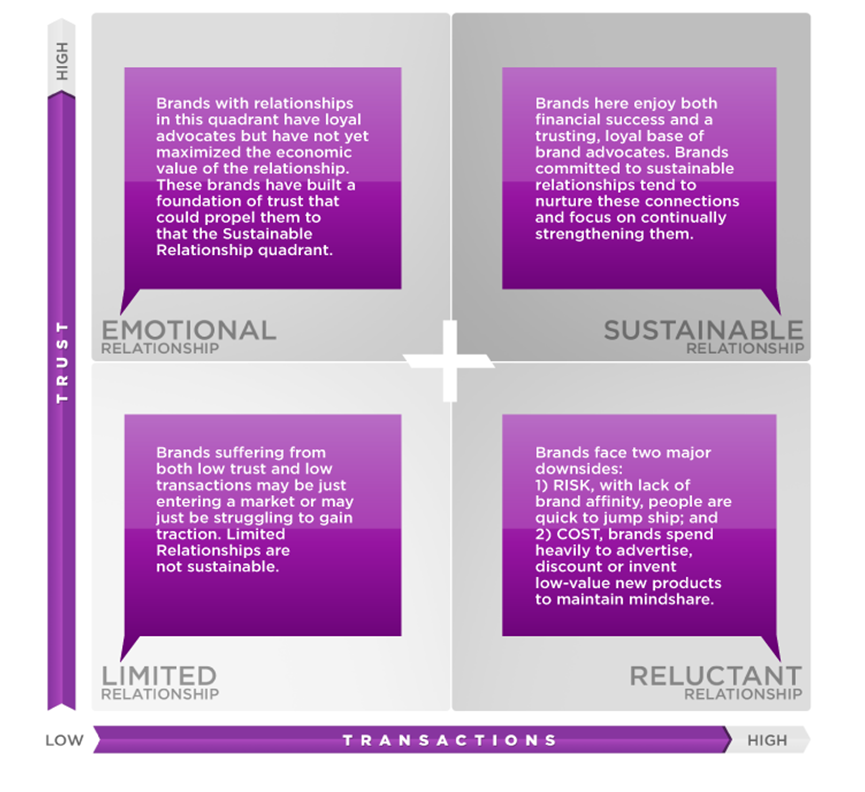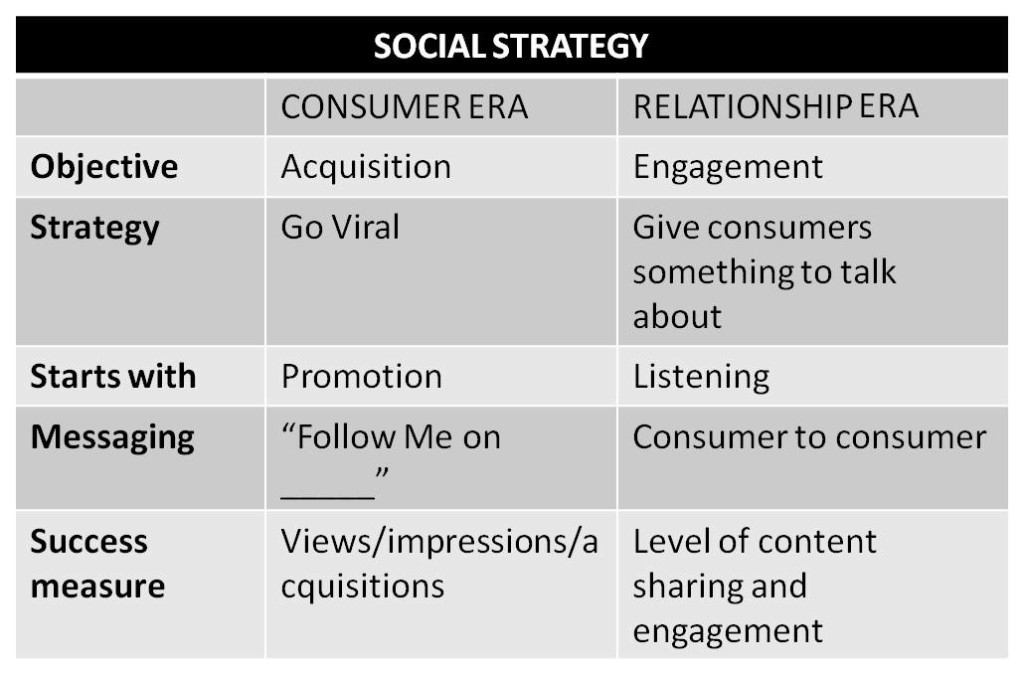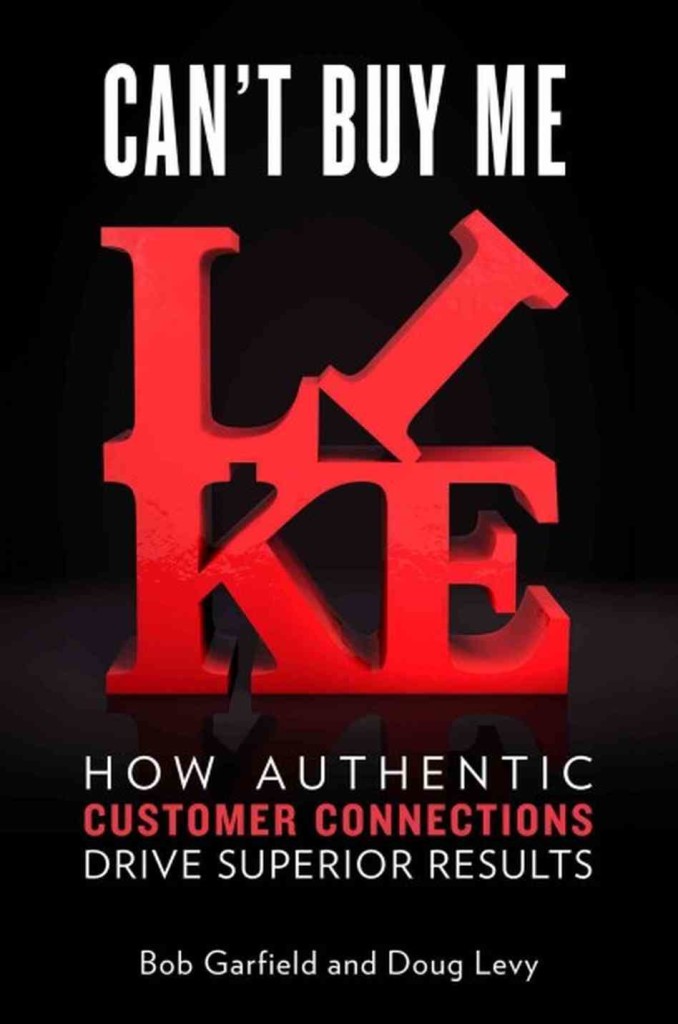
Do you know that most TV ad viewers avert their eyes the moment a company’s brand appears?
Or that 6 out of 7 “megaviral” branded videos – think Subservient Chicken and Old Spice Man – are jump-started with paid seedings?
Seasoned with startling facts like these, Can’t Buy Me Like by long-time journalist Bob Garfield and CEO of MEPlusYOU Doug Levy is a rollicking read. With the onset of what the authors call the “Relationship Era,” companies are urged to shift from transaction and campaign-oriented consumer marketing to a more purposeful, trust-oriented form of relationship era marketing.
Like other “social” marketing books of its ilk, the book begins with a sordid scenario depicting the demise of mass-marketing. Ad revenue for print has declined by two-thirds over the last 15 years in the US, while TV commercials are stymied by DVRs owned by 40 percent of US households.
These precipitous drops are accelerated by the increasing lack of trust among consumers in candy-coated corporate brand-speak.
Sustaining Brands through Trust
To arrest this, Garfield and Levy proposes that Trust needs to be brought back into the marketing – and business – equation. Brands with a strong foothold in trust can build richer and more sustainable relationships with their constituents, compared to those focused purely on transactions.
This can be represented by the top right quadrant in the authors’ Brand Sustainability Map below:

Brand Sustainability Map courtesy of the relationship era
In the book, trust is represented by three “Cs”:
- Credibility: The ability to say what you mean, and mean what you say. “If the M&Ms melt in your hand, and not in your mouth…” ;
- Care: Actually caring about the lives of your consumers and constructing your business to be as helpful as you can; and
- Congruency: Ensuring that the intangibles of an organisation – beliefs, values and purpose – are authentically aligned to the wavelengths of consumers.
Discerning Your Greater Purpose
Before building a sustainable brand infused with the goodness of Trust, you need to discern your brand’s higher purpose.
Here, we’re told how enlightened companies like Patagonia, Zappos, Charles Schwab and even (gasp) Krispy Kreme Doughnuts embraced higher callings while earning lots of consumer love in the process. This can be done by addressing your “Whys” followed by your “Hows” and “Whats” (ala Simon Sinek).
To bring it all together, companies should measure their “social engagement” metrics (think number of shares, comments, likes, reposts, etc) while embracing a six-step process as follows:
#1 Listen to Your Publics
Listen, particularly on social platforms, to discern what your company’s publics (ie stakeholders) are truly concerned about. Using Venn diagrams, you can draw overlapping circles of interest around topics of relevance to your brand.
A good way to do so involves using social listening tools like HootSuite, BuzzSumo, Socialbakers, and others. Read my article here to learn more about the social media tools you can use.
#2 Define Your Social Personality
Define how your social personality should be crafted and conveyed.
How can your brand be portrayed as a living, breathing, warm-blooded person? What are its unique (and possibly quirky) personality attributes?
#3 Join the Conversation
Here, you need to be careful not to keep talking about yourself. Doing so would seen as being abrasive and boastful.
Instead, listen and share helpful information focused on the needs of your specific consumers. Be seen as one of the guys and gals, rather than a large corporation trying to pitch a product or service.
#4 Lead the Conversation
Find ways to lead the conversation revolving around your brand. Do this using the topics that you’ve earlier identified in 1).
When doing so, however, be careful not to push your brand upfront right from the onset. Instead, solicit gradual involvement through questions.
#5 Ignite and Invite Action
Trigger the right kinds of action. Once you’ve reached a certain maturity in your level of relationship, you can find ways to stimulate greater participation.
Create and curate content which is valuable to your communities, and seek the help of your constituents.
#6 Inspire Greater Collaboration
Finally, uncover ways to inspire greater collaboration. Seek opportunities to deeply engage and involve your consumers in developing products (eg LEGO Mindstorms).
Crowdsource innovative ideas from your communities, tapping on the brand prosumers in your tribe.
This shift towards a Relationship Era Marketing – termed a “social strategy” – can be represented by the table below:

Courtesy of Can’t Buy Me Like
“Female Fearlessness”
My favourite part of the book is probably the section on Secret.
By focusing on “Female fearlessness” as a brand value, Secret worked with athletes like skiier Lindsey Vonn and swimmer Diana Nyad to successful bring its core purpose to life.
Its also laudable how Secret’s Facebook page “Mean Stinks” encourage kids to be civil and kind to each other. At the same time, it helps to ignite massive fan growth and engagement numbers (203,000 new fans in one day, with a total of 339,000 text and video engagements).
Social Strategy Goodness
Written with much journalistic flair, Can’t Buy Me Like is chock full of social strategy goodies brought to life by numerous examples and case studies.
While much of its ideas are not altogether new (the memes of “likability” and “trust” are much bandied about by new-age marketers), I like how the book presented both the pros and cons of “social era” marketing in a candid and bullsh*t-free demeanour.
Let me end with some choice quotes from the book for your entertainment:
“It is better to be admired than ad-mired.”
“In the Relationship Era, your every action, and inaction, is advertising.”
“Useful advice in business and in life: Don’t be a dick.”


This sounds like an amazing book. I love the idea of “female fearlessness” as a brand. It reminds me of a book I recently finished called, “Stop Playing Safe: Rethink Risk. Unlock the Power of Courage. Achieve Outstanding Success” by author Margie Warrell. Stand out points in her book are, “Conquer fear of failure” and “Stop procrastinating to make the changes and take the chances you’ve always wanted in your work, career or life.” I am reading the book for the second time. AMAZING! http://margiewarrell.com/
Well this is really a informative post and I am glad to read such a great post. I came to your site by mistake but from now I am going to read all of your posts. Great! If you buy faceboook likes, you will have the chance to double number of individuals which are following you.
Just as I planned to buy facebook likes, I came into this site and have read over your useful tips with regards to buying facebook likes. I really appreciate your blog, really, thanks a lot for having this one.